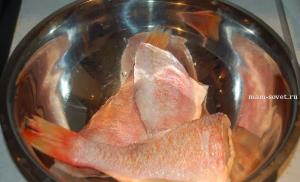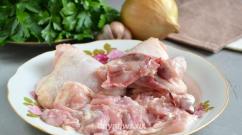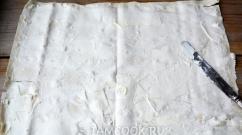Why potato leaves do not grow. Poor potato harvest: causes and solutions
As long as we eat at our summer cottages, we will not face hunger. Boiled, fried, stewed - it is loved by everyone and is suitable for everyone - children and adults, healthy and sick. Therefore, the question of how many potatoes will grow in the country this year is far from idle. And I think no one will refuse to learn a few secrets in order to increase the harvest of the "second bread".
But there are still some secrets ...
Secret 1: disinfection of planting material
The planting material must be disinfected. This is a useful prophylaxis against pests during the germination period. And the addition of boric acid to the solution will serve as a useful growth stimulant.Such processing will undoubtedly affect the yield, as the planting material will become much more resistant. Tubers can be processed in two ways - either soaked for 2-3 hours in disinfectant and nutrient solutions, or aerosolized (that is, in other words, spray the tubers from a spray bottle).

- Recipe 1- disinfectant
- Recipe 2 - disinfectant and nutritious
- Recipe 3 - disinfectant and nutritious
- Recipe 4 - for aerosol processing

Warning: aerosol processing is done when the sprouts have not yet "bred". If there are already sprouts, it is advised to first green the tubers, and then spray it with a half-diluted composition.
Secret 2: bathing in a nutrient solution
If, 2 days before planting, sprouted potato tubers are watered with a special nutrient solution, this will accelerate both the emergence of seedlings and the beginning of the formation of tubers. Such a simple method can increase the yield of potato bushes up to 10-13%!- Nutrient solution recipe
If you have to plant non-sprouted tubers, such a nutritious bath is performed a day before planting.
Secret 3: stimulating incision
The yield of a potato bush can be increased by cutting the planting material in a special way. It will take time and some effort, but the result is worth it - the yield increase can exceed 12-13%.Special stimulating cuts on the tubers are advised to do before the germination of the eyes(about 1.5-2 months before planting). Then the already cut tubers are germinated.
Cross cut
Thanks to such an incision, not only the eyes located in the upper part of the tuber, but also in the middle and even in the lower parts, start to grow. But they never germinate at all with standard germination technology!A transverse incision is made on the tuber perpendicular to the axis. The incision is deep: only a small part of the tuber remains uncut - about 1 cm; it turns out like a jumper between the halves:

As a result, growth substances begin to be distributed evenly over all eyes, and each tuber produces a strong bush with many stems. You can carry out your own experiment - cut some of the tubers, and germinate some in the usual way. Then compare the results and determine how the “operation” affected the yield. Data from the experimental station of the Moscow SA named after K.A. Timiryazev showed a 17% increase in the yield, and the experiments of the children's association "Ecologists-Researchers" in the Olonets station of young naturalists - more than 20%.
Annular cut
This incision is also made to stimulate the growth of the maximum number of sprouts. The potato tuber is cut along the entire circumference to the depth of the phloem layer - 1 cm (it is easier to do this by attaching a limiter to the knife blade at this distance).The annular cut can be transverse and longitudinal.

With the annular incision of the tuber, the influx of nutrients and growth substances to the apical part of the tuber is blocked, these substances are directed to the lateral lower buds, which stimulates their activation and germination. As a result, the number of stems increases, which will directly affect the number of tubers in the bush.
Experiments have shown that with a transverse annular cut on the lower part of the tuber, those eyes that would have remained inactive are activated and germinate, and with a longitudinal annular cut, the sprouts in the stolonic part do not develop, but in the apical part they begin to develop noticeably more actively.
The effect will be greatest if the "ringed" tubers are kept warm for 25-30 days - at temperatures of +14 ... + 18 degrees Celsius (which is quite feasible both in a private house and in a city apartment). Ring cuts should be done when forcing potatoes early.
Warning: in order to exclude the transfer of diseases from tuber to tuber, it is recommended to choose only healthy roots for cutting, and periodically disinfect the knife during processing in a solution of potassium permanganate, lysol or formalin.
Secret 4: geographic
Many experienced summer residents believe that the most "productive" direction of potato furrows on the site is from North to South.
Then in our latitudes until noon the sun will warm and fully illuminate one side of the rows - the east, and in the afternoon - the other, the west. This will allow the entire plantation to receive maximum light and heat, and, therefore, will have a positive effect on increasing the yield.
Secret 5: still watering
Different opinions, technologies and benefits of watering potatoes are discussed in great detail and in an interesting way in the article and in the comments to it.
Regardless of your beliefs, if there is an opportunity to water, then you should not neglect it. Moreover, potatoes are not, and it is enough to water it 1-3 times throughout the season. And if hot dry days fell during the period of flowering and tuber formation, watering will 100% increase the yield of potato bushes!
How to water a large potato plantation, in the next video shows and tells an experienced gardener Gennady Myagkov
Secret 6: a nutritious menu
In order for the potatoes to feed us all winter and spring, we must also give him three meals a day at least once a year - feed him "breakfast, lunch and dinner."
Here is one of the options for such a three-time feeding for the whole season:
I feeding
Most effective during the active growing season, especially if the stems are weak and thin. Experienced summer residents advise using green fertilizer - it will well support the active growth of the stems. You can use the following tried and tested recipe:- Recipe
II feeding
Stimulates potato flowering. Therefore, it is most effective when plants are blooming.- Recipe
III feeding
Stimulates and accelerates tuber formation.- Recipe 1
- Recipe 2
Warning: feeding is not recommended during the flowering period - this can provoke an outbreak of diseases and stimulate growth.
The next video will show how you can feed potatoes with dry fertilizers and solutions
Secret 7: the tricky break
This secret is 137 years old. And it belongs to the famous Russian gardener Richard Ivanovich Schroeder. On his advice, if in 14-20 days after flowering, the stems are broken at a height of about 10-15 cm from the soil, the yield of the potato bush will increase significantly. The break must be such that without losing integrity, the stem, however, would not have been able to rise any more.What's the secret? And the fact is that nutrients rushing to the top of the stems, reaching a break, "unfold" and go straight to the tubers. Tops, nevertheless, does not wither, the process of photosynthesis does not stop - that is, the vital activity of the potato bush continues.

Warning: These breaks will be effective on healthy bushes. If the plants are affected by diseases and pests, it is hardly worth waiting for positive results.
Secret 8: double the harvest
Early planting potatoes are dug in early June, the largest tubers are carefully selected, and the small ones are left on the roots. And ... they immediately put them back in their place! Pour half a bucket-bucket of water into the prepared hole - and the roots of the bush are placed right in the soil slurry. They huddle and observe - after 5-7 days the bushes take root and until autumn they manage to please the owners with another harvest. Try it))
Potato diseases can be diagnosed by a change in the state of the tops. Usually, their pathogens are mixed from the stems to the root system.
There are various reasons why potato diseases appear:
- low resistance of varieties to pathogens;
- the presence in the soil of a fungus that infects potatoes, tomatoes and other nightshade crops;
- high humidity and hot weather, provoking the spread of the fungus;
- lack of nutrients;
- improper fertilization and watering.
Fungal diseases of potatoes

Fungal-type diseases spread harmful spores. They can be stored in inventory, in planting material, old tops. The development of fungal diseases occurs at high humidity and high ambient temperatures. The main diseases of potato tops, photos, descriptions and treatment are given below.
Potato late blight
Late blight is one of the most insidious fungal diseases of potatoes. The pathogen affects both the aboveground and underground organs of the plant, but the first symptoms usually appear on the leaves. Most often this happens during flowering - brown spots are formed on the lower leaves and, growing, are covered with a white bloom. Long brown stripes form on stems and petioles. In warm and humid weather favorable for the development of the fungus, the tops quickly turn into a solid rotting mass.

In dry weather, the development of the disease stops, but this does not mean that the plants become healthy - after the first rain, the process resumes.
Measures to combat late blight on potato plantings
In the fight against late blight, the cultivation of late blight-resistant varieties is of great importance. To prevent the disease from spreading to the tubers, early hilling and mowing of the tops are carried out before harvesting. During the growing season, plants are sprayed with a solution of copper sulfate or Bordeaux liquid. The first spraying of tops is carried out in the budding phase. Copper sulfate is dissolved at the rate of 10 grams of the drug per 10 liters of water. Consumption of working solution 5 ... 8 liters per 100 square meters of potato planting.
To prepare Bordeaux liquid, 120 grams of quicklime is dissolved in 3 liters of water, and 60 grams of copper sulfate are dissolved in another dish in 3 liters of hot water. Both liquids are poured together and on the same day spraying is carried out with a working solution flow rate of 6 liters per 100 square meters. The second spraying is carried out when the first signs of the disease appear on the lower leaves of the plants.
Dry rot of potatoes
Widespread disease of potatoes during storage. Losses of tubers from it often reach 50%. Tubers with mechanical damage are especially strongly affected by dry rot.

First, grayish-brown dull spots appear on the tuber, slightly depressed inward. The flesh of the tuber under the stain becomes rotten, voids appear in it, filled with white fluffy mycelium.
On the affected part of the tuber, the skin shrivels, grayish-white, yellowish, pinkish mycelium pads are formed on the surface. Rot quickly spreads in the tuber and leads to its destruction.
Dry rot of potatoes - control measures
The causative agent - Fusarium fungus is found in almost any soil. He begins to show himself more actively, after waiting for favorable conditions for him. And he loves the soil, supersaturated with nitrogen or well-fertilized. So, if you are fond of excessive feeding, expect this trouble for yourself.
Spores, sleeping peacefully in the ground for the time being, begin to penetrate the planted potatoes through cracks or wounds. the disease begins to develop actively, affecting the roots, stem and leaves. During the flowering period, the same Fusarium wilting begins to be observed.
The tips of the upper leaves become light, whitish, then the stem begins to be affected. Outside, a pinkish bloom appears on it, then the disease penetrates inside, on the cut you can notice a color change at an early stage. After the growth of the bush slows down, and the plant gradually withers.
Potatoes can become infected with dry rot not only at the stage of tuber development. You can dig up healthy looking potatoes and store them. But after one and a half to two months, brownish spots begin to appear on the tubers, then they increase, become sunken. Eventually, the potato turns into a hard and light ball.
The thing is that fusarium is not treated. It can be prevented, slowing down the spread, but the affected tubers will still deteriorate. Moreover, this disease "drags" many different infections and fungi along with it, which can deprive a good share of the harvest.
Potato viral diseases
Diseases of a viral nature cause irreversible changes in plant organisms. Their effect leads to discoloration and deformation of the tops. As a result, the potato has a depressed appearance and develops slowly. 
The infection persists in the tubers and has no external manifestations. After planting the contaminated material, the potato development process is disrupted. The spread of the virus is bed bugs, aphids, leafhoppers and other insects.
Diseases can be avoided if preventive measures are taken. This includes the selection of quality planting material, preventive treatment of tubers and soil.
Potato mosaic can be caused by various viruses, depending on which it can be speckled, streaky or wrinkled. When infected with wrinkled mosaic, the plants do not bloom and end the growing season 3-4 weeks earlier than others. As a result, the yield obtained is seriously reduced, and its quality is poor. The leaves of diseased plants become wrinkled, the color is noticeably more faded. Such leaves gradually die off, but in most cases they remain hanging on the branch without falling off. With a striped mosaic, the potato stems become very fragile, characteristic stripes and spots appear on the leaves and stems. With speckled mosaic, general chlorosis develops, while the plants noticeably lag behind in development. Often, the virus develops in a latent form for a long time. A mosaic of green color appears on young leaves. In this case, the size and shape of the spots are different. With any type of viral mosaic, diseased plants must be removed and destroyed immediately without trying to heal. So there is a chance to save most of the harvest. Be sure to plant potatoes that are initially resistant to this insidious disease.
Control and prevention measures against viral diseases of potatoes
Most viral diseases are transmitted by planting material. Therefore, you should plant tubers selected only from healthy plants. They grow strong, not threadlike shoots.
And it is necessary to plant and collect potatoes early, and during the growing season, regularly inspect the plots and remove plants with signs of viral diseases from them.
Often the infection is transmitted by sucking aphids, bedbugs, and cicadas. These pests can be destroyed with the help of insecticides, which are approved for use in home gardens, as well as infusions or decoctions of garlic, onion husks.
In and around vegetable gardens, weeds should also be destroyed, which are reserves of viruses - nightshade, henbane, field birch. It is from them that insects transmit the infection to potatoes.
Potato bacterial diseases
Bacterial diseases may not appear for a long time. Harmful bacteria are usually found in planting material that looks perfectly healthy on the outside. The disease is detected after planting potatoes, when violations occur in the process of its development.
Black leg of potato
The disease is caused by soil bacteria. The disease appears in the first half of summer, two weeks before flowering, in the form of rotting of the lower part of the stem. The leaves of the affected plants turn yellow, curl and gradually wither. From diseased stems, infection through stolons, lenticels and various injuries passes into tubers and remains during storage. With an early development of the disease, tubers are not formed, and with a later development, small tubers are formed, affected by black rot inside. The tuber tissue softens and turns into a slimy mass. 
Tubers from diseased plants retain their infectious origin and promote new infestation. In addition to potatoes, the causative agent of black leg damages tomatoes, cucumbers, legumes and umbrella crops and causes the greatest harm at high humidity, on heavy structureless soils.
Protective measures against blackleg potatoes
It is important to observe crop rotation, to carry out a thorough incorporation of plant residues. Potatoes must be carefully sorted out before storing them in storage in autumn and before planting in spring. If a disease occurs, in the following years, grow only resistant varieties such as: Gatchinsky, Priekulsky early, Borodyansky, Volzhanin, Iskra and others.
Biological agents. To reduce the infection of tubers with wet rot, the seed material before planting must be treated with a working solution of the Fitosporin-M preparation with a consumption of 0.4-0.5 kg, having previously dissolved it in 30 liters. water, spraying is carried out with stirring of tubers.
Chemicals. Treating seed tubers before planting with TMTD, VSK. The working solution is prepared, thus, 4-5 liters. the drug is dissolved in 65-70 liters. water and process 1 ton. tubers. It is possible to use other drugs of this group.
Before laying the seed potato tubers for storage, they are treated with Maxim. Preparation of working solution: 0.2 l. the drug is dissolved in 2 l. water and spray the tubers, stirring them from time to time.
Ring rot of potatoes
The disease progresses slowly. The first symptoms are observed in the second half of the growing season of the crop (just after flowering). Moving from the affected mother tuber to the potato stems, the bacteria cause blockage of blood vessels, as a result of which water access to the upper part is limited and the stem withers. In diseased plants, individual stems first wither, which soon lie on the ground, then the entire bush withers. In contrast to the black leg, diseased stems are firmly held in the ground. The leaves of the affected part turn white, losing chlorophyll. If a cut of a diseased stem is placed in water, then milky mucus comes out of it.

Ring Rot Methods
There are no special chemical agents to combat this disease. Therefore, this disease is considered quarantine. The main measures to combat this disease are as follows:
- Compliance with the optimal timing of crop rotations (1-3 years).
- Growing resistant potato varieties.
- It is obligatory to warm up the seed, for 2-3 weeks, at a temperature of 15-18 degrees Celsius. Tubers can be warmed up both for storage and before planting in the ground. At such temperatures, the disease manifests itself well (soft, black-pitted potatoes), which allows the selection of most of the infected tubers.
- Top dressing of potatoes with potash and nitrogen fertilizers helps to strengthen the immunity of plants.
- After flowering, it is necessary to dig up all potato bushes with signs of ring rot infection. In favorable years, for the development of this disease, infected bushes stand out strongly in the garden.
- Before harvesting potatoes, it is advisable to mow the ground part of the potato bushes, which reduces the likelihood of contamination of the crop.
It is quite possible to fight potato ring rot, but this is a long quarantine process. If a significant part of potatoes is annually affected by ring rot, then it is necessary to replace the potato planting areas and planting material. You need to buy seeds only from trusted producers who have a license and all the necessary sanitary documents confirming the quality of planting material. This is the only way to completely overcome this disease.
How to kill two birds with one stone - reduce the growth of tops and increase the yield
A method that was used more than a hundred years ago!
It often happens that, despite good care and significant growth of the tops, the tubers of potatoes are nevertheless small.
The reason for this phenomenon is that strong tops use too many nutrients to the detriment of the tubers, especially the so-called seed potato balls, while they do not bring any benefit at all.
To eliminate this phenomenon, many authoritative owners have developed the following purely practical technique. This very simple method consists in the fact that after the flowering of the potatoes, after one to two weeks, the tops are broken.
To clarify how this technique is applicable from a practical point of view, the following experience is given. In 1909, 2 sq. fathoms were planted with two equal squares of potatoes.
On the first plot, 10 days after flowering, the tops were crushed by manual breaking, and the second was left under an ordinary crop for control.
In the fall, over 30 pounds of beautiful, uniform and large potatoes were harvested from the first plot, and from the second, control, less than 27 pounds, and much more small than large.
Thus, from breaking the stems, in addition to size, we also get an increase of 3 pounds per 1 square meter. fathoms, which per tithe will be 2400 x 3 = 7200, that is, 180 poods of excess harvest.
("Farm" 1913, No. 1)
Mowing tops
The best time frame for this work is budding period... You should not be late in mowing the tops. If this work is performed during the flowering period, then the regrowth of young stems slows down and the yield of tubers decreases.
When pruning, they leave stems 15-20 cm high in the later varieties and 10 cm in the early ones.
In all the years of testing, the potato yield was 16-21% higher on those plots grown with tops trimming.
Simultaneously with checking how the seed quality of potatoes improved, the effect of cutting tops on the yield in the year of planting was studied. And in this case, the annual collection of tubers was 19-34% more than the usual method.
"Potatoes and Vegetables" (1957, No. 4)
Tricks of hilling potatoes
Perhaps even those who have never planted potatoes know that potatoes should be hilled. But how to do it correctly? It turns out that there are some small tricks here, writes Marina, Nekrasovskoe.
When to start hilling?
A variety of answers can be found in the literature to this question. The reference point in all recommendations is the height of the shoots, but the numbers are called different: from 14 to 20 cm.
I myself prefer to start hilling as early as possible. At the same time, I am guided, however, not by centimeters, but by the signals of a completely irrational "device" - intuition :)) Over time, probably, every gardener has such a flair: you just look at the plants and understand what exactly they need now.
In fact, early hilling replaces both weeding and the recommended loosening of the soil. In our unstable climate, it serves, moreover, to protect seedlings from recurrent frosts. Traditionally, potatoes are planted in our country in early May. And in the second half of the month - just in time for the emergence of seedlings - cold weather usually comes. Sprouts covered with a layer of soil can calmly tolerate even a short-term drop in temperature just below zero (sometimes this happens ...)

Not once noticed: after hilling, potatoes seem to accelerate growth. If the weather is also favorable, the bushes grow and get stronger literally before our eyes. Therefore, I am never too lazy to once again walk with a hoe along the rows, loosening the earth and rolling it to the ridges.
How many times to spud?
Classic - 2 hilling: the second is carried out 2-3 weeks after the first, before the potatoes bloom. But if you start this activity early enough, two times are not enough. In this matter, too, I prefer to focus not on abstract "norms", but on the needs of real plants.
If the grown bushes fall apart, or the nest is not formed along the ridge, but grows across, in breadth, and tubers begin to peep out of the ground, turning green in the light, then it is necessary to spud, no matter what they say.

I happened to huddle potatoes 3 and 4 times per season. Someone will say that it is too laborious ... I don’t know, for me weeding is much more tiring. And then I walked across the field with a hoe - and the earth is loose, and there are no weeds, and the potato bushes are vigorous and beautiful, even)) And then they thank you for an excellent harvest.
What is the preferred time for hilling?
At the time of hilling potatoes, you can often see gardeners with hoes in the fields in the middle of a hot summer day. And this is not good for health either, and the plant is not good for it. When we huddle, we still bother him, we hurt the shoots, it happens inadvertently to disturb the underground part. In the heat, all this becomes critical, and the plants can wither. Therefore, in hot weather, you should spud potatoes in the morning or evening, when the activity of the sun decreases.
It is best to do hilling after rain. The benefits are twofold. First, moist soil does not fall off the ridge. Secondly, by adding moisture-saturated soil to the base of the stems, we stimulate the formation of additional stolons (underground shoots on which potato tubers are formed) - and this is an increase in yield.

But then in theory)) In practice, it also happens that it is high time to huddle, but there is still no rain. Naturally, we will not postpone an important matter in anticipation of a favorable weather forecast, but if the soil is completely dry, we will water it before hilling.
Is hilling always applied?
Inventive gardeners and inquisitive minds everywhere are looking for alternative solutions, and hilling potatoes is no exception. First, they came up with fitting methods that make this procedure unnecessary (for example, fitting under a black non-woven fabric). Secondly, they proved empirically that uncooling "works" just as well.
What's the point? Hilling potatoes, we solve several problems at once: we loosen the soil; we create an additional volume of it, in which the tubers are formed; push the plant to form stolons in the lower (covered with soil) part of the stems; we improve the lighting of plants, collecting them "in a pile" and not allowing them to shade each other; getting rid of weeds. But it turns out that the same tasks can be solved in exactly the opposite way.
Uncooling- This is a method in which the growing tops, instead of being lifted up, are spread on the ground. Soil (options: grass, straw, other materials) is poured from above, leaving only the tops of the shoots on the surface.
As they grow, everything repeats itself. In this way, my friends grew potatoes under the grass (in the absence of straw) - they were satisfied with the result. True, more space is required than with the traditional method of cultivation.
fan-shaped boredom, or "Zamyatkin's way".
In the fall, we immediately put all the vegetable waste from the garden into the beds and spill it with one of the organic disinfectants: "Shining", "Fitosporin", "Vostok", "Baikal". The distance between the beds is about 1.2 meters, since the tops grow huge, almost human-sized.
If in the fall they did not manage to prepare such beds, then they can be made in the spring from the contents of the compost heap.
To begin with, in order to compare, only a few tubers are planted in this way.
After the tubers are laid out in the garden, the potatoes are covered with organic waste by 15 centimeters. After the potato tops have grown by 15 centimeters, the branches move apart and from above are again filled with organic matter from the compost heap.
Only the very tops remain on the surface. On the second day, the sprouts rise up. In this case, organic matter can be added during the entire period of potato growth.
Collecting such potatoes is also easy and pleasant. Since it is not in the ground, the tubers remain clean, they are not afraid of the wireworm and the Colorado potato beetle. A large amount of organic fertilizers, and as a result, a good harvest of large potatoes.
Between the rows of potatoes planted in the "Zamyatkin method", you can also plant siderates: phacelia, vetch with oats, mustard, oil radish, which will then be used for mulch.
Perhaps the most common vegetable crop in our country is potatoes. Despite the fact that this plant has long been known to agriculture, it is not always possible to get a good harvest of root crops. This may be due to the large tops of the potatoes. What leads to the growth of green mass, as well as how to deal with it, our today's article will tell you.
Potato tops are not the edible part of the plant. However, it is a valuable raw material for the creation of organic fertilizers through composting or burning to ash. And also it is used to prepare infusions of traditional medicine in order to combat certain insect pests. At the same time, high and abundant green mass can negatively affect the yield. The fact is that in a situation where the potato has well-developed tops, its roots are formed small. In this case, the plant spends all its energy on forcing greens, leaving very grains on the underground part, for which the gardener plants this crop. Although this situation is not always possible. Whether or not potatoes are small with high tops depends on many factors.
The following moments can lead to a situation where the greenery of the potato grows very much:

It is worth noting that a lot of tops does not always mean a poor harvest. This may well be a feature of a particular variety. However, in order not to lose the potato crop, you still need to know what to do in this situation.
Video "Potato Care"
From the video you will learn how to care for a root crop.
What to do
When growing any vegetable crop, you need to know the peculiarities of caring for it in order to prevent the appearance of pests, the development of diseases and a decrease in plant fertility. Potatoes do not require too much care to get great results from them in the form of large and tasty root vegetables. But there are times when it is necessary to take certain measures in order not to lose the crop. One of these moments will be a huge potato bush (more than 80 cm). If the greenery is actively growing, then this indicates that it is necessary to make adjustments to the care of the plantings.
Situations when the tops are higher than a meter indicates too much nitrogen in the soil. In this case, you need to adjust the feeding. With the normalization of nutrients in the soil, the tops, naturally, will not decrease, but the process of tuberization will take place. The introduction of 100 g of superphosphate, diluted in 10 liters of water, will stop the growth of the green mass and force the plants to form tubers. 
A growing potato bush must be properly fertilized in order to avoid active growth of its aboveground part. For this, the feeding should be as follows:
- the first time feeding is carried out immediately after the appearance of the first shoots. It is carried out using ammonium nitrate or urea. 10-15 g of the drug should be dissolved in 10 liters of water. You need to know that when carrying out an autumn or spring filling of the soil with manure, fertilizers are not applied for the first time in order to prevent an excess of nitrogen in the soil;
- further feeding is carried out after hilling. The second time, fertilizers are applied at a leaf height of 20-25 cm (20-30 g of nitrophosphate is scattered between the rows). With good soil feeding, no more fertilizer is needed. During the summer, some gardeners carry out foliar dressing several times, which saturate the earth with phosphorus, potassium, magnesium and other trace elements.
It is worth noting that foliar dressing can be combined with spraying the bushes from late blight and Colorado potato beetle. 
If you cannot determine what caused the forcing of the bushes, then the tops can simply be crushed and bent. Such manipulations will lead to the fact that the potatoes will stop growing for at least two weeks, which will give a chance for normal tuberization. The method is very popular among gardeners, as it does not require additional costs for fertilizers, stimulants, and also takes little time.
You can simply remove the greens. Today, there are two ways to remove the aboveground part of the potato:

Both haulm removal methods can be applied one week before mowing. Such an algorithm of work will allow for better and easier removal of all shoots and stems, without damaging the roots or garden tools. This is especially important for varieties that form powerful and strong stems and leaves.
It is worth noting that in the presence of prolonged rainy weather, the tops can begin to form anew. In this case, it can be re-treated with special chemical solutions. Before this, you need to carry out the mechanical removal option again.
Also, one of the methods of increasing the yield of bushes is to mow the tops. But here you need to know when you can mow the tops of potatoes.
Mowing tops after flowering
You can mow the tops of potato bushes after the plant stops blooming. Until this moment, it is better not to touch the above-ground part of the bushes, as this can affect their yield. 
It should be noted that mowing the tops of potatoes after flowering is an important part of the harvesting process. This procedure is carried out for the following reasons:
- removal of green mass stimulates the maturation of root crops;
- the quality of the fruit increases;
- furrows and beds dry out rather;
- the risk of infection of tubers with diseases, carriers of which may be on the tops (for example, late blight), is reduced. Mowing the aboveground part of the bush serves as a good prevention of various diseases, and also allows you to get rid of pests that have not yet managed to move from the tops to the soil for wintering. But it is impossible to determine the infection of tubers from healthy ones, since at this stage the disease does not manifest itself in any way;
- increase the shelf life of potatoes in the basement.
In addition, mowing the tops greatly simplifies the further collection of potatoes. However, to get all the benefits described above, you need to know exactly when to do this procedure. Otherwise, your efforts will not bring the expected result. Experienced gardeners are advised to harvest the greens at least two weeks before the expected harvest time. You can find information that this process can be carried out a week before digging up the potatoes. But also you need to wait a week before mowing in a situation if the bushes have been treated with fungicides. A slight delay, especially in the presence of rainy weather, can lead to massive infestations of tubers due to the strong accumulation of fungal spores on the infected leaves.
When mowing the tops, it must be remembered that pathogens, as well as insect pests, can exist in the soil for a long time. Therefore, in order to prevent fetal infection, an integrated approach should be taken. It involves not only the removal of the green mass of the bushes, but also the processing of the soil. To treat crops from pathogenic microflora and pests, it is necessary to use fungicides. In this case, chemicals can do an excellent job of protecting root crops from harmful microorganisms. 
Mowing should be carried out only after the end of the budding period. If you do this during flowering, you can slow down the tuberization process.
As you can see, large tops of potato bushes in most cases leads to a decrease in yield. Therefore, the tops must be monitored in order to prevent its overgrowth.
Video "Mowing"
From the video you will learn how to mow the tops.














